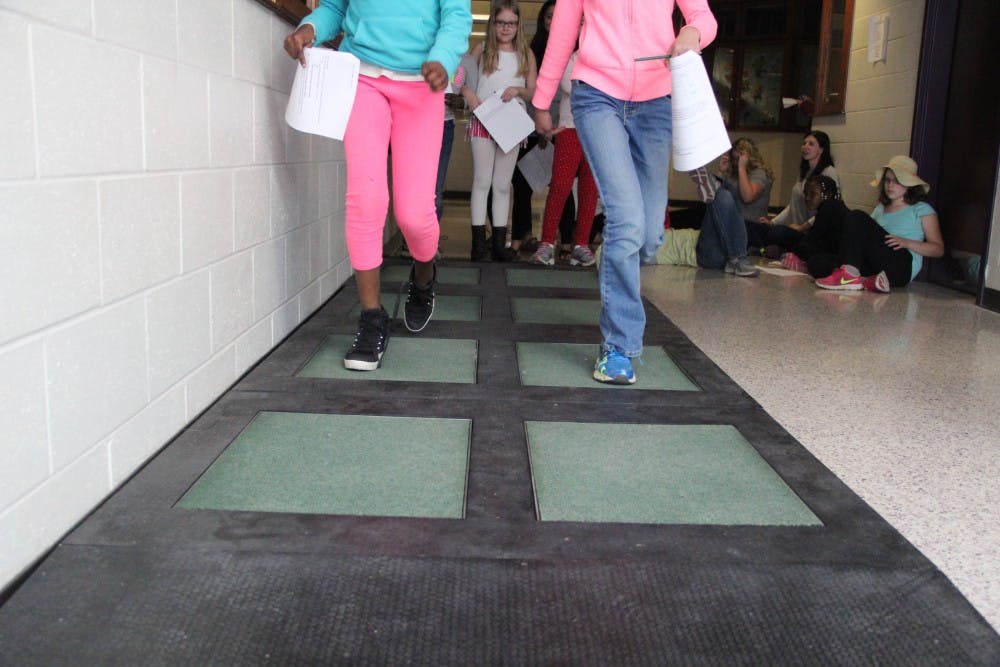That’s the idea behind Pavegen, a tech company in London that manufactures flooring that takes wasted kinetic energy from footsteps and turns it into electricity.
Last week, due to efforts of an AP Environmental Science class, Bloomington High School South became the first public institution in the country to install Pavegen tiles.
“It makes renewable energy accessible and understandable because it’s tangible,” Amanda Figolah, the teacher who led the project, said. “They get to actually see exactly how much power their steps are creating and it’s made them start to think more about sustainable energy in other aspects of ?their lives.”
The school has four Pavegen modules that take up about 20 to 30 square feet. They are used to power two light displays on the wall across from the tiles. As students walk across the hall, the display lights up. Soon, the tiles will also be used to power a phone charging station and a television.
“I knew about climate change and everything but didn’t really care,” Alison Erman, a student at South, said. “I’ve always thought that I don’t have to worry about it, I’m just a kid. But now that I’m growing up I know that I have to do something.”
Soon the high school won’t be the only place in the U.S. where the tiles can be found; officials from the White House have also expressed an interest in the company.
“The class got really excited when we found out about that one,” Figolah laughed. “They love saying that we beat the White House.”
Though the tiles produce power — so far they’ve generated around 8,500 joules — their main purpose is to educate students about alternative forms of energy and get them excited about ?sustainability.
The high school students have been working on a curriculum that they hope to teach elementary school students about the system. Thursday, local Girl Scout troop 03134 enjoyed learning about the project while jumping on the tiles.
“We’re talking about science and math, which are fields that girls are falling away in,” Holly Bales-Hall, the troop leader, said. “Being able to come here and learn from such smart high school girls is going to empower my girls and make them say, ‘Hey, I can do that too.’”
The Brownies split into groups and worked with South students to hypothesize the best ways to generate the most energy on the flooring. They tested their theories — jumping, stomping and speed walking across the hall.
“I would like to have pretty much everything in the whole world powered by things like this,” Courtlyn Bales-Hall, a fourth grader in the Girl Scout troop, said. “That way, the Earth can heal itself and not explode from all of ?the pollution.”
As the girls gathered to discuss what they had learned, it was clear the group’s mission had been accomplished. They discussed where they would put their own tiles and other ways kinetic energy might be used. One girl suggested an ankle bracelet that harnessed the power of steps, unaware that inventors are already working on that same idea.
The members of Project Pavegen hope South will be a destination for a yearly elementary school field trip.
“It’s awesome to get to see the kids having fun with it,” Erman said. “Hopefully they’ll grow up and remember this and it might inspire them to do something new and different. Kids are the ones that will be able to change the world.”
World-changing is exactly what Courtlyn has in mind.
“When I’m older I’m going to have Pavegen in the lobby of my doctor’s office,” she said. “Everyone has to walk through the lobby and they won’t even know that they’re making power.”






